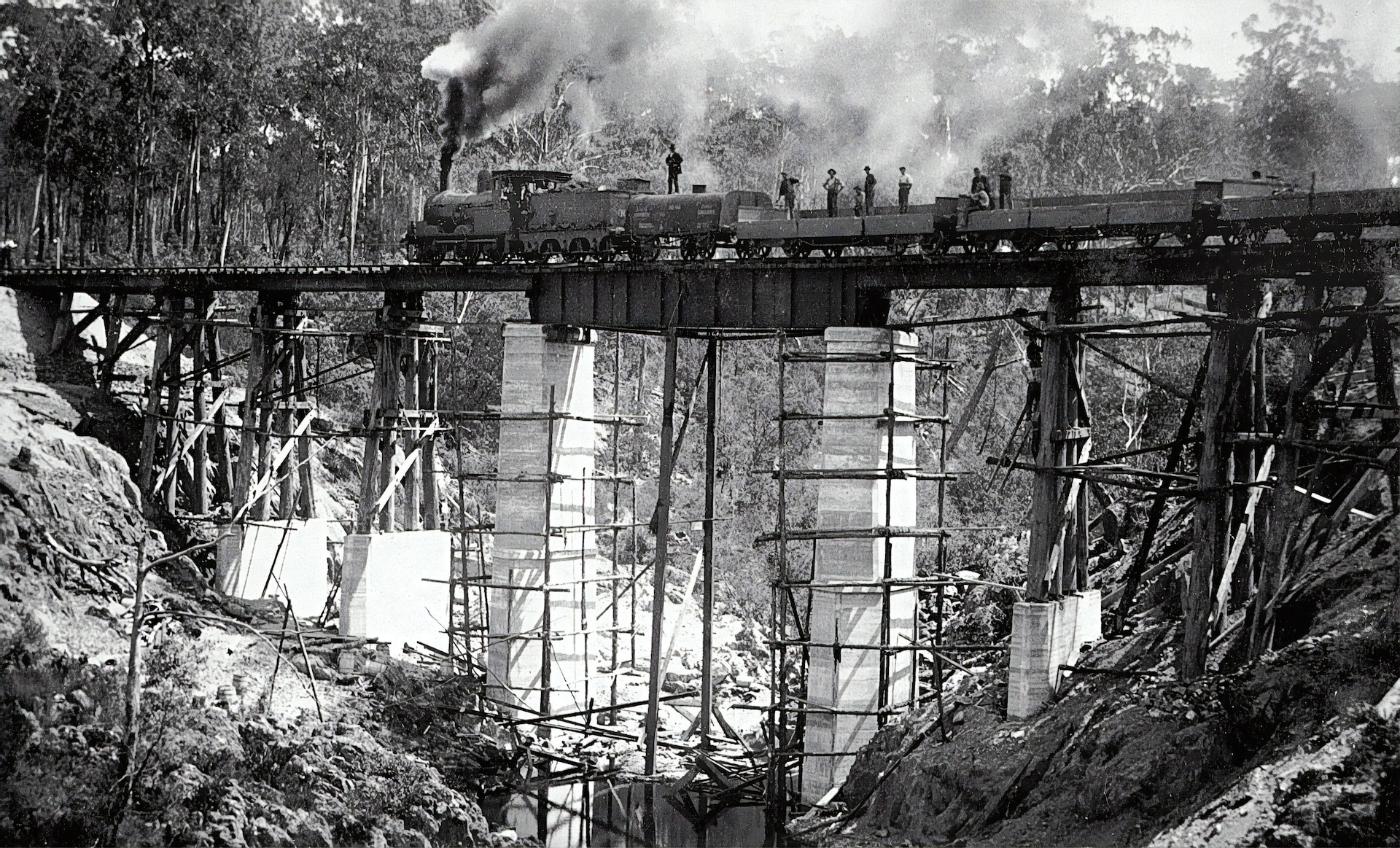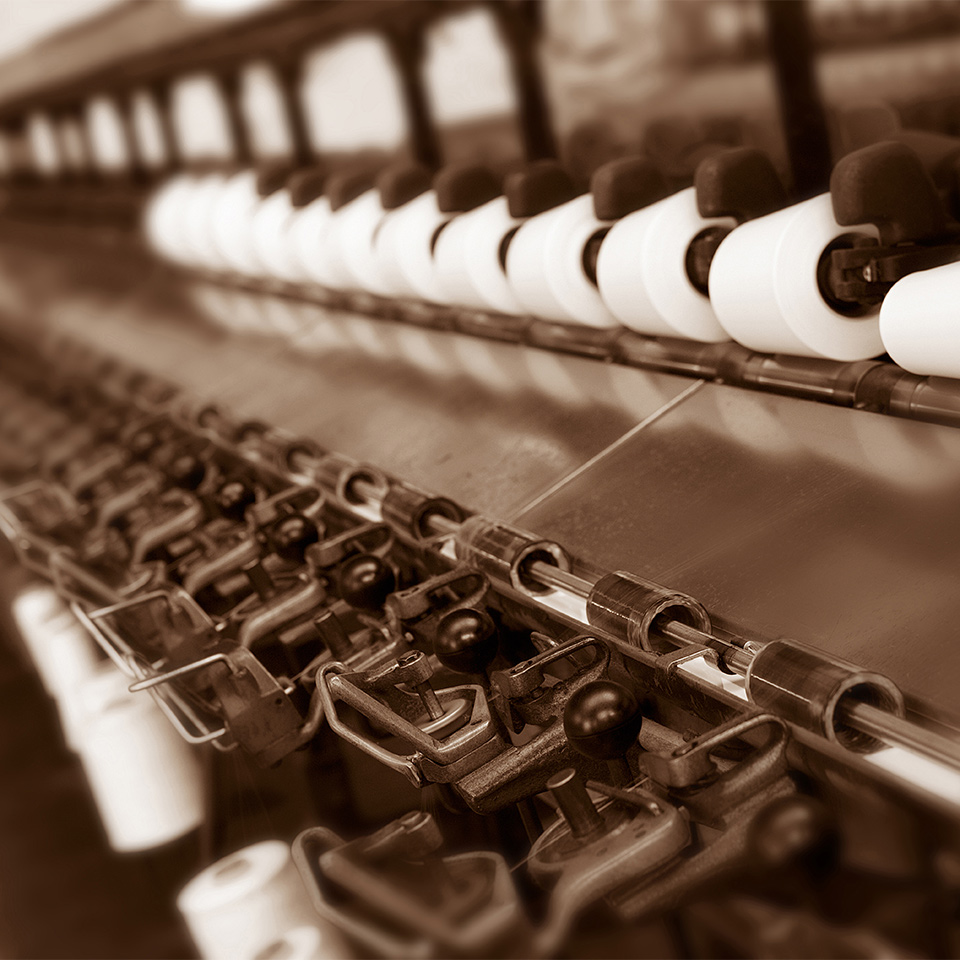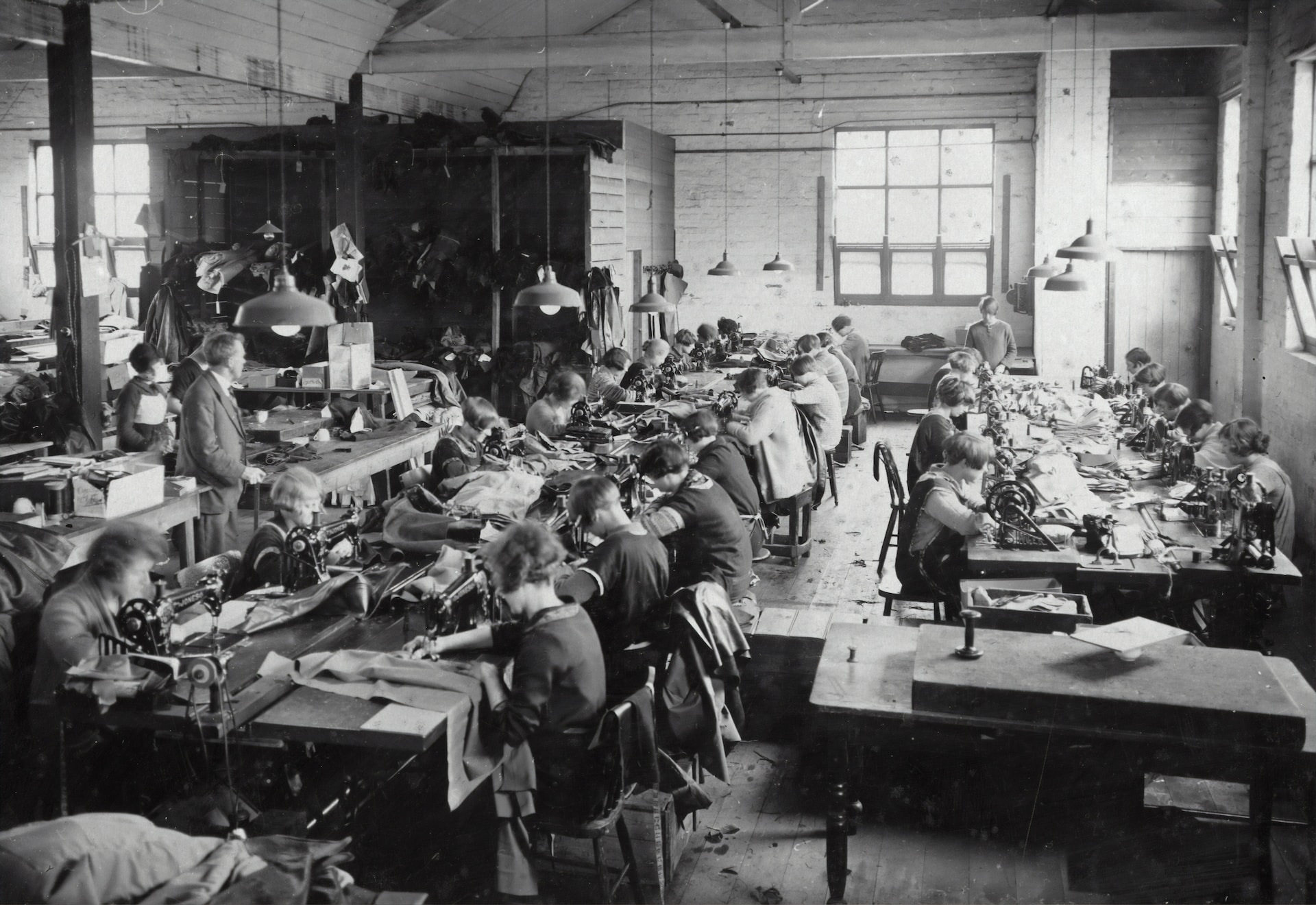The Industrial Revolution, spanning the late 18th to mid-19th centuries, marked a turning point in history, as many societies transitioned from agrarian economies to industrialised nations. In this blog, we will delve into the fascinating timeline of this era, exploring the revolutionary inventions, societal shifts, and lasting impact that shaped the world we live in today!
Timeline of the Industrial Revolution
The world has witnessed at least three transformative Industrial Revolutions that reshaped societies and economies from mechanisation, to electricity and automation and mass production. Arguably, we are currently living in the fourth Industrial Revolution.
Pre-Industrial Era (1700-1760)
Agricultural Revolution
Improvements in farming techniques and equipment, such as Jethro Tull's seed drill, led to increased agricultural productivity.
Textile Industry
Innovations like the flying shuttle revolutionised textile production, laying the foundation for proper industrialisation.

First Industrial Revolution (c.1760-1840)
Steam Power
The development of James Watt's steam engine in the late 18th century revolutionised industry by providing a reliable and efficient source of power.
Iron and Coal Industries
Advances in iron production techniques and the use of coal as a fuel source bolstered industrial growth, enabling the construction of railways and machinery.
Canal and Railway Networks
The expansion of canal and railway networks facilitated transportation and trade, connecting distant regions and boosting economic development.
Factory System
The establishment of large-scale factories and the division of labour transformed the way goods were produced, increasing productivity and output.
Mechanical Engineering
Breakthroughs in machinery and engineering, including the invention of the spinning jenny and the mechanical reaper, increased productivity in various industries.
Second Industrial Revolution (c.1870-1914)
Steel Industry
The earlier invention of the Bessemer process (around 1856) for mass-producing steel led to significant advancements in construction, machinery, and transportation.
Electrical Power
The harnessing of electricity and the development of electrical systems, such as Thomas Edison's incandescent light bulb, revolutionised manufacturing processes and transformed urban life.
Communication and Transportation
Capitalising on the earlier invention of the electric telegraph (c. 1837) and the expansion of railway networks further accelerated communication and trade on a global scale.
Mass Production and Assembly Line
Innovations like Henry Ford's assembly line and the introduction of interchangeable parts revolutionised manufacturing, enabling mass production and making goods more affordable.
Chemical Industry
The development of chemical processes, such as the Haber-Bosch process for ammonia production, opened up new possibilities in agriculture and industry.
Automobile Industry
The invention of automobiles and the widespread use of internal combustion engines changed transportation forever and ushered in a new era of mobility.
Third Industrial Revolution (c.1950s-2000s)
Also known as the Information Age or the Digital Age, exact dates for the third Industrial Revolution are hard to define. It tends to be spoken about as beginning in the mid-20th century, with start dates within the range of 1947-1950s (although as late as the 1970s-80s is not unheard of). The ending of the third Industrial Revolution is even tougher to pinpoint, although a date within the 2000s (but pre-2020) seems to hold a consensus. Interestingly, it's actually the subject of much debate as to whether the third Industrial Revolution has even ended at all, although references to the fourth Industrial Revolution (Industry 4.0) began in the 21st century and became popular in the 2010s.
Computerisation
The retirement of analog electronics heralded the digital revolution, with the invention and adoption of personal computers. The microprocessor was also invented, along with improved digital storage.
Information Technology
The creation of the internet - and the development of email, digital communications, digital media and software, database management and ERP systems - forever changed how the world works.
Advancements in Communication
The telephone, radio, and early forms of television became ever more sophisticated with the invention of fibre-optic cables, mobile phone technology and satellite communications.
Nuclear and Renewable Energy
Nuclear power was born, and early developments in renewable energy saw more and more people trying to replace the old ways of generating electricity like oil and gas.
Materials Science and Biotechnology
Just as polymers and other advanced materials reached new heights, so early genetic engineering and medical advances like MRI and CTI scans were evolving our understanding of organic material.
Fourth Industrial Revolution (Present Day)
We now find ourselves in the fourth Industrial Revolution (or on the cusp of it, depending on who you talk to!). This 21st-century period is marked by the continued rapid evolution of digital technologies, artificial intelligence, portable power, and the internet of things. In this era, data is the new currency, and the ability to collect, analyse, and leverage vast amounts of information is reshaping business models and decision-making processes. Automation and intelligent machines are revolutionising production processes, increasing efficiency, and driving innovation. Increasingly, the lines are blurred between the physical, digital, and biological worlds.

Notable Inventions
The Industrial Revolution brought about a wave of ground-breaking inventions that transformed various industries and daily life. Some of the most notable inventions were:
Spinning Jenny (1764) - James Hargreaves: The spinning jenny was a multi-spindle spinning frame that allowed a single operator to spin multiple threads simultaneously. It significantly increased yarn production and played a crucial role in the mechanisation of the textile industry.
Water Frame (c.1769) - Richard Arkwright: The water frame was a water-powered spinning machine that produced stronger and finer yarn than the spinning jenny. It led to the establishment of large-scale textile factories and propelled the textile industry forward.
Steam Engine (c.1769) - James Watt: James Watt's steam engine was a pivotal invention that powered the Industrial Revolution. It harnessed steam power to drive machinery and provided a reliable source of energy, leading to advancements in transportation, manufacturing, and mining.
Spinning Mule (c.1779) - Samuel Crompton: The spinning mule combined features of the spinning jenny and the water frame, improving the quality and consistency of spun yarn. It was widely adopted in the textile industry, enhancing productivity and contributing to the growth of the cotton trade.
Power Loom (c.1785) - Edmund Cartwright: The power loom mechanised the process of weaving cloth. It increased the speed and efficiency of textile production, reducing reliance on hand weaving and enabling the production of large quantities of fabric.
Cotton Gin (1793) - Eli Whitney: The cotton gin was a device that efficiently removed seeds from cotton fibres, revolutionising cotton production. It greatly increased the speed of processing cotton, boosting the profitability of cotton plantations but simultaneously (and sadly) fueling the demand for slave labour.
Steam Locomotive (c.1803) - Richard Trevithick: The steam locomotive enabled the development of railways as a means of transportation. It transformed travel, trade, and industrial growth, connecting distant regions and facilitating the movement of goods and people on an unprecedented scale.
Telegraph (1832-38) - Samuel Morse: The telegraph was a major innovation for long-distance communication. It used electrical signals to transmit messages over long distances, enabling rapid and reliable communication across continents and facilitating the growth of global trade and interconnectedness.
Sewing Machine (1846) - Elias Howe: The sewing machine automated the process of stitching fabric, making clothing production faster and more efficient. It revolutionised the garment industry and facilitated the mass production of clothing.
Telegraph Cable (c.1858) - Cyrus West Field: The successful laying of the transatlantic telegraph cable allowed near-instantaneous communication between Europe and North America. It brought continents closer together, revolutionising international communication and trade.

The Social and Economical Impact
Shift from Agrarian to Industrial Society
The Industrial Revolution marked a shift from predominantly agrarian economies to industrialised societies. As machinery and factories emerged, traditional agricultural practices gave way to allow manufacturing and industrial production to become the primary sources of economic growth.
Urbanisation
The rise of factories and industries drew people from rural areas to cities in search of employment. This rapid urbanisation led to the growth of crowded industrial towns and cities. As a result, new social and living conditions emerged, with overcrowded slums, poor sanitation, and challenges to provide adequate housing and public services.
Rise of the Working Class
The Industrial Revolution brought about a significant change in the social hierarchy. The working class, comprising factory workers, miners, and labourers, emerged as a new social group. They endured long working hours, low wages, and often poor living conditions. The working class became the backbone of industrial production, but their struggles for better working conditions and rights shaped labour movements and paved the way for reforms.
Inequality and Wealth Disparities
During industrialisation, wealth became concentrated in the hands of a small group of industrialists, intensifying socioeconomic inequalities. This led to the emergence of wealthy industrialists, while the working class endured harsh working conditions and limited chances for upward mobility.
Poor Labour Conditions
Factory workers (including men, women, and children) faced gruelling working conditions. Long working hours, dangerous machinery, and lack of safety regulations contributed to high rates of accidents and injuries. The exploitation of child labour was prevalent, as children were often employed in hazardous conditions and deprived of education and a proper childhood.
Social Reforms and Labour Movements
The harsh realities of industrialisation sparked movements for labour rights and social reforms. Workers organised unions and strikes to fight for improved working conditions, fair wages, and better treatment. These efforts eventually led to the establishment of labour laws and reforms that sought to protect workers' rights.
Family Dynamics and Gender Roles
Industrialisation altered traditional family dynamics and gender roles. Men often left home for work in factories, while women and children worked alongside them. This shift challenged traditional gender norms and led to discussions about women's rights and the role of women in society.
Impact on Education
The need for an educated workforce increased as industries advanced. The demand for basic literacy and technical skills led to the growth of education systems and the establishment of schools. However, educational opportunities were often limited for the working class, perpetuating social inequalities.
The Industrial Revolution’s Legacy & Impact
The inventions and advancements of the Industrial Revolution laid the foundation for modern industries, manufacturing processes, and the development of new technologies that have revolutionised various aspects of our daily lives. It brought about a shift in economic systems, with the rise of industrial capitalism and the factory system driving production, profit, and economic growth.
It also had a profound impact on global trade and imperialism. Industrialised nations, particularly Britain, emerged as economic powerhouses and sought to secure resources and markets around the world. This drive for raw materials and markets fueled colonial expansion, establishing empires and shaping the geopolitical landscape. The innovations and technologies of the Industrial Revolution spread beyond their places of origin, diffusing to other parts of the world. Countries that embraced industrialisation experienced accelerated development and modernisation, while others faced disparities in economic development.
However, the Industrial Revolution also had major consequences. It brought about significant environmental changes, with increased burning of fossil fuels, deforestation, and pollution. It also sparked social and political changes; It fueled debates on workers' rights, labour laws, and the role of government in regulating industry. The rise of the working class and their struggle for improved conditions led to the formation of labour unions and the birth of the modern labour movement, shaping the development of social welfare systems and the concept of worker protections.
By understanding the Industrial Revolution, we gain insights into the roots of modern industrial societies and the challenges and opportunities they present. If you want to delve deeper into this fascinating topic, consider exploring our accredited course on the Industrial Revolution. For just £29 (save £98!), you can expand your knowledge and gain a comprehensive understanding of this pivotal era.




